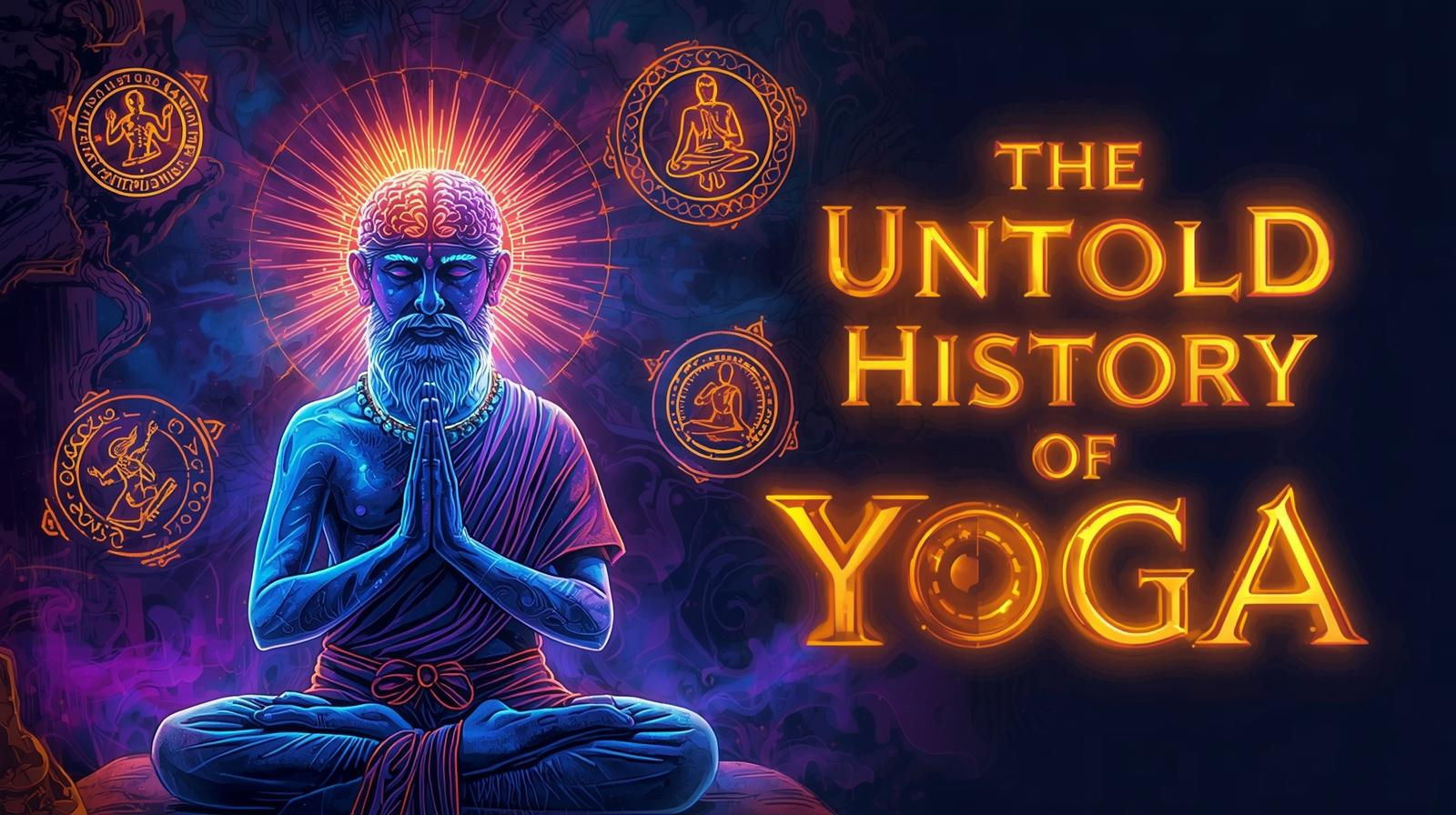
Whenever people think about yoga, images of peaceful meditation, deep breathing, and graceful postures instantly come to mind. But have you ever asked yourself: who invented yoga? Was it the creation of one wise teacher, or is it something that grew naturally over thousands of years?
The truth is fascinating. Yoga is not just a workout routine – it is a spiritual, mental, and physical practice with roots going back more than 5,000 years. It has traveled through civilizations, been shaped by sages, and finally evolved into the global wellness movement we know today.
The Ancient Origins of Yoga
The earliest traces of yoga date back to the Indus Valley Civilization (around 3000 BCE), where archaeologists discovered ancient seals showing figures seated in meditative postures. These images prove that the practice of controlling the body and mind was already in existence.
The first written evidence appears in the Rig Veda, one of the world’s oldest sacred texts. Here, yoga was not about stretching or physical strength. Instead, it was a way of connecting to the divine through discipline, chants, and rituals. Later, the Upanishads (800–500 BCE) explained meditation and breath control in more detail, teaching seekers to look inward and realize the atman (soul).
By the time of the Bhagavad Gita (around 500 BCE), yoga had developed into different paths of practice. The Gita described three main forms:
- Karma Yoga – the yoga of action and duty
- Bhakti Yoga – the yoga of devotion and love for the divine
- Jnana Yoga – the yoga of wisdom and knowledge
Clearly, yoga was not born in one moment. It was a slow evolution, shaped by generations of thinkers, teachers, and seekers.

Patanjali – The Father of Yoga
If one person must be named when people ask “Who invented yoga?” the answer is usually Patanjali. Around 200 BCE, this great sage compiled the Yoga Sutras, a collection of nearly 200 short teachings that gave yoga a structured philosophy.
Patanjali introduced the famous concept of Ashtanga Yoga – the eightfold path that leads a seeker from self-discipline to ultimate liberation. The eight limbs included ethical rules, personal discipline, physical postures, breath control, meditation, and finally samadhi, or union with the higher self.
This systematic explanation is why Patanjali is often called the Father of Yoga. But it is important to note that he did not “invent” yoga – he organized and preserved knowledge that had already existed for centuries.
Yoga’s Journey Through Time
After Patanjali, yoga continued to grow and change. During the medieval period, new practices such as Hatha Yoga appeared. This form focused more on physical postures, breathing, and body purification. It was designed to prepare the body for long hours of meditation.
In the 19th century, yoga found a new audience. Swami Vivekananda presented yoga and Vedanta philosophy to the West at the Chicago Parliament of Religions in 1893. His teachings opened the door for millions of people outside India to discover the practice.
In the 20th century, legendary teachers such as B.K.S. Iyengar and Pattabhi Jois brought yoga into homes, gyms, and studios worldwide. They emphasized the physical benefits of yoga, making it accessible to people of all ages. Today, more than 300 million people practice yoga across the world, in forms ranging from traditional Kundalini Yoga to modern variations like Hot Yoga and Power Yoga.
Ancient Yoga vs Modern Yoga
| Feature | Ancient Yoga | Modern Yoga |
|---|---|---|
| Purpose | Spiritual liberation (Moksha) | Fitness, stress relief, flexibility |
| Focus | Meditation, breath control, inner journey | Physical postures, relaxation, wellness |
| Teachers | Gurus, sages, spiritual masters | Certified instructors, fitness trainers |
| Texts | Vedas, Upanishads, Bhagavad Gita, Sutras | Books, studios, online courses, YouTube |
| Style of Practice | Chanting, meditation, pranayama | Vinyasa, Power Yoga, Hot Yoga, online yoga |
| Audience | Seekers, monks, philosophers | Health-conscious individuals, global public |
This comparison makes it clear: ancient yoga was a path to enlightenment, while modern yoga is more about physical and mental well-being. Both are valuable, but their goals are very different.

Did One Person Really Invent Yoga?
The short answer is no. Unlike a machine or an invention, yoga was never the product of one mind. Instead, it was the result of thousands of years of cultural and spiritual development.
- Vedic sages planted the first seeds.
- Patanjali gave structure to the philosophy.
- Medieval yogis expanded it with physical techniques.
- Modern teachers brought it to the global stage.
Yoga is best understood not as an invention, but as a living tradition – a gift passed from generation to generation.
Why the Origins of Yoga Still Matter Today
Some people may wonder why it even matters who invented yoga. The reason is simple: knowing the roots of yoga helps us practice it with respect and authenticity.
Yoga is not only about stretching muscles – it is about balancing the mind, body, and spirit. By remembering its history, we keep the practice connected to its true purpose: transformation, awareness, and inner peace.
In today’s world of stress and busyness, yoga’s ancient wisdom is more important than ever. It reminds us that health is not just physical, but also mental and emotional.

Conclusion
So, who invented yoga? The truth is that yoga was not the work of a single person. It was a collective creation, developed over thousands of years by sages, philosophers, and teachers. From the Vedic age to Patanjali, from Hatha yogis to modern yoga instructors, this practice has continued to evolve while staying true to its central purpose: harmony between body, mind, and soul.
Today, whether you practice yoga for fitness, stress management, or spiritual growth, you are participating in a tradition that has survived for millennia. Respecting its roots makes the journey more meaningful — and ensures that yoga remains not just an exercise, but a way of life.
Who actually invented yoga?
Yoga was not invented by a single person. It evolved in ancient India over 5,000 years through sages, texts, and spiritual traditions.
When was yoga first practiced?
Yoga traces back to the Indus Valley Civilization (around 3000 BCE) and was later described in the Vedas and Upanishads.
How is modern yoga different from ancient yoga?
Ancient yoga focused on spiritual liberation and meditation, while modern yoga emphasizes fitness, flexibility, and stress relief.
Did yoga originate in India or somewhere else?
Yoga originated in India. It later spread globally through teachers like Swami Vivekananda and modern yoga masters.
Why is it important to know the history of yoga?
Understanding yoga’s history helps practitioners connect with its spiritual roots and practice it more authentically.





